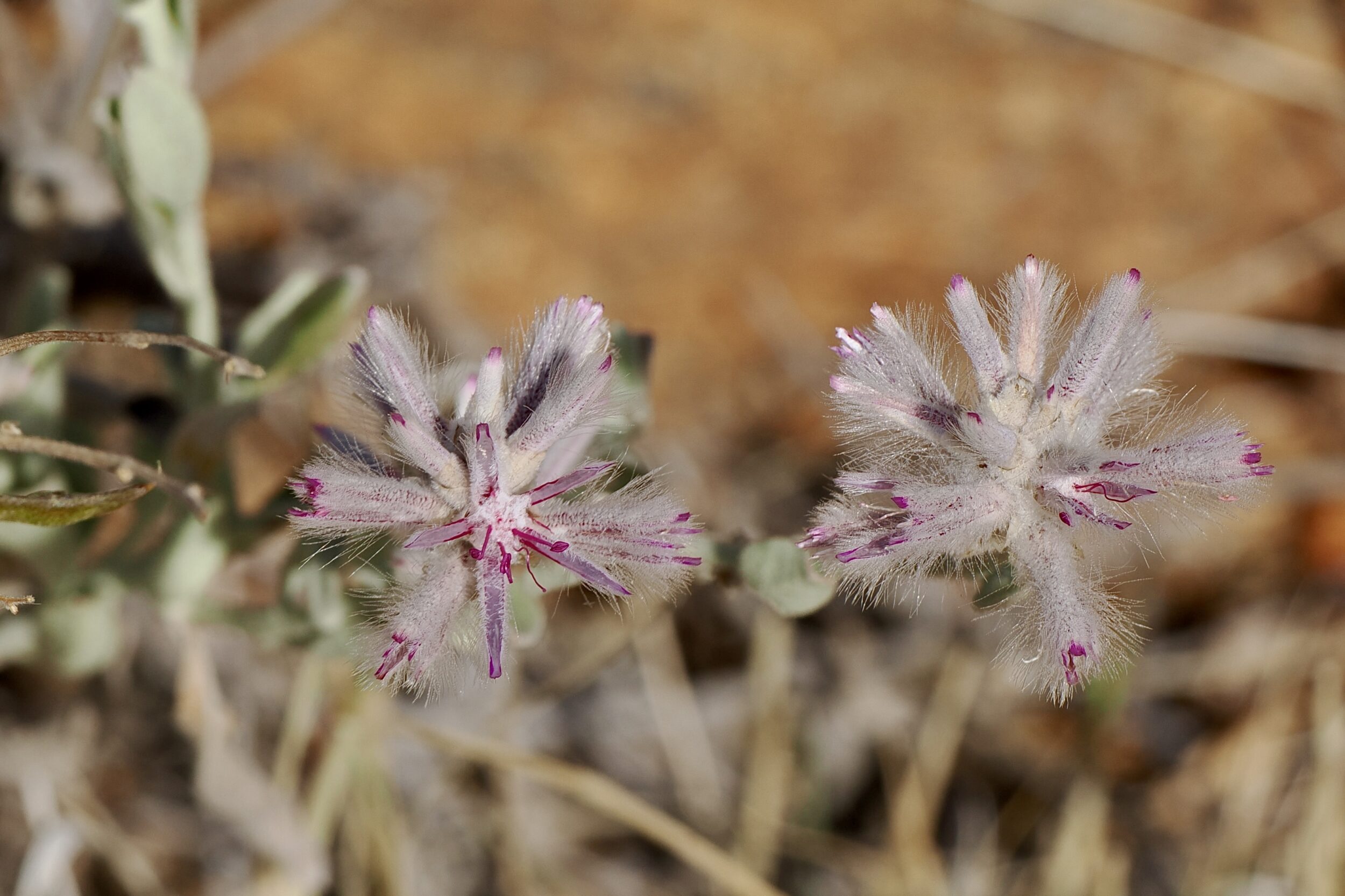Some arid Australian plants are flamboyant, immediately arresting, intensely colourful.
However, to a hasty, inattentive human, not a few of them look “plain”, “drab”, barely-there.
Rich rewards await the more attentive: if you stop, and “zoom in”, you will discover that many such plants are exquisitely structured and their colour palette is much richer, and/or more variegated, than was initially apparent.
The petite, pictured example is probably a member of the genus Ptilotus; the name refers to their flowers’ “hairy” appearance.
Ptilotus derives from the Greek ptilotos, meaning “feathery” or “soft-winged”.
This almost-entirely Australian genus has circa 120 identified species; most are arid zone specialists, and many are commonly known as mulla mulla, foxtails, pussy tails or lamb’s tails.
Photo is copyright Doug Spencer, taken on 18 June 2023 in the Olive Pink Botanic Garden.
Australia’s only such arid zone botanic garden is an easy walk from Alice Springs’ CBD; click this for an overview.
Musical bonus:
For some years, “French cellist Vincent Segal + Malian kora player Ballaké Sissoko” and “French saxophonist Émile Parisien + French accordionist Vincent Peirani” have been two of my favourite, occasional duos.
They recently formed Les Égarés; this occasional quartet has recorded a wonderful album; click here to discover more.
The name notwithstanding, the group is definitely not “lost”.
This is a “live” performance of one of their album’s originals; its title means “hope”, “expectation”, or “optimism”:
